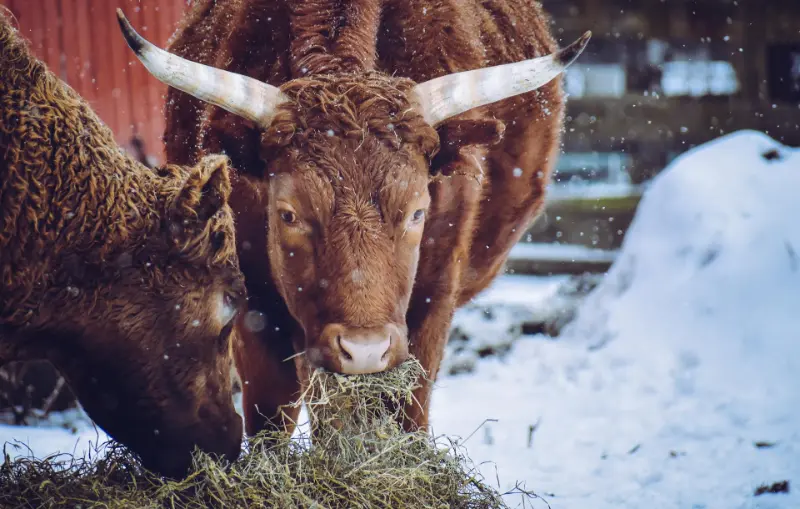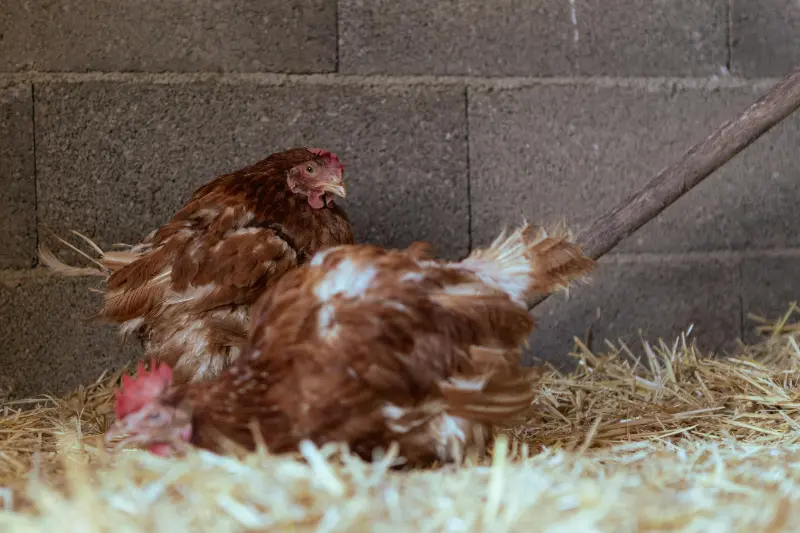Winter Tips for Livestock Owners
When the mercury drops below freezing, most livestock owners across the country shudder – not just because of the cold, but because it often means a lot more work for farmers caring for livestock in winter. From additional forage to fresh water, adequate shelter, and proper bedding, there are a few things livestock owners can do to make work easier as the temperature drops.
Access to Water
The first and most crucial thing all outdoor animals and livestock need is access to fresh, thawed water. This can be a challenge in the winter, especially in regions where temperatures are sub-zero for extended periods of time. Traditionally, the options included using sledge hammers to break up ice on water troughs multiple times a day, Carrying fresh or even warm water to the barn a few times daily, or expensive and often dangerous trough heaters to prevent the water from freezing. However, there are other options that can make life easier.
One option is to fill water or soda jugs with salt water and allow them to float around in the trough with the natural airflow movement. The movement in the water will prevent a thick layer of ice from forming, and animals can learn to push down on the floating bottles to drink should some ice build up around them. Depending on where you live and how cold it gets, you can add more or less salt as needed to keep the jugs themselves from freezing.
Another option is to put a bubble or aerator in the tanks. These are easily purchased at any garden or outdoor store and frequently used for fish ponds. The bubbles keep the water moving from the bottom of the tank up, allowing it to circulate and help prevent freezing. As with the jugs, the colder area in which you live will determine the size of the bubbler you may need.
Of course, a trough heater may be the best option if you live in a really cold climate or are experiencing a serious cold snap. While these tend to use more electricity than a bubbler, a little planning can help reduce electric costs and fire risks. Fortunately, our friends at Valley Vet carry options that range from 500 watts to 1000 watts, with floating or sinking options built into a plastic protective cage, making them safe for rubber troughs. Use only the wattage you need, and consider plugging into an outdoor wifi-connected outlet to set a schedule and be able to easily toggle on or off from wherever you may be! Ensure that everything is plugged into a GFI outlet so that should anything go wrong, the outlet’s circuit will trip further, reducing the fire risk. We also recommend placing the trough away from outbuildings so there’s less of a chance of damage to the barns and livestock themselves in case of an issue.

Winter tips for livestock owners include ensuring animals have free choice forage and access to shelter.
Forage = Warmth
Did you know that most barnyard animals get warmth from forage, not bedding? It’s true. Forage, next to water, is the most essential thing for farm animals in winter. For livestock such as horses, cattle, goats, and sheep, that means free-choice hay specific to their species. For example, in colder weather, many horses require a higher-quality hay even if they are not at work. Better hay means more calories, generating more heat as it digests.
Avoid over-feeding grains or concentrates or falling for many “old wives’ tales” you may have heard as they lack scientific evidence to back them up properly. A common example of this is how corn is often fabled to generate heat, but if your livestock is not used to getting fed corn, it can cause digestive issues, or worse! Even things like bran mash for horses, while nice and something most horses enjoy, do little at best to generate warmth, especially if the animals do not have free choice forage and access to unfrozen water first. The last thing any farmer wants is a veterinary emergency during a winter storm or arctic cold blast!

Weatherproof outdoor wifi outlets can help schedule and manage trough heaters to increase efficiency while reducing risks.
Access to Shelter
Any good farmer will tell you that all livestock and barnyard animals need access to shelter. Whether it’s cows, pigs, chickens, goats, horses, dogs, or even barn cats, they need a place to escape the elements. However, any good farmer is also likely to tell you their animals often opt to stand outside in the elements. Why? Livestock fur is naturally insulating, so most animals don’t need blankets – even many horses! Snow settles on top of their fur, forming an insulative layer that helps retain body heat.
In fact, without access to shelter, this isn’t always the case. Cold rain, ice storms, wind, and other slew of winter weather elements can affect an animal’s self-insulation ability. When this happens, animals will seek shelter, and having free access to a three-sided shelter with a roof is essential. For stalled horses, it’s different since they can be brought inside during bad weather. And in the case of chickens, having a coop lined with plenty of bedding is key (heat lamps optional – if you use them, please ensure the coop is away from other outbuildings due to fire risk).
Bedding for farm animals helps insulate when the weather prevents their naturally-designed coats from doing so. Lots of dry bedding in a shed, stall, coop, or cat hut will help the animal stay warm in even the chilliest of months. Often, you’ll find animals grouped together to share and conserve body heat. This is true for all barn animals, from cats to chickens, and even horses and cows! Another option for cats is to install a weather-proof cat door such as this one, allowing access into a tack or feed room with either heat, heated bedding, or enough blankets in an enclosed insulated area to allow their body heat to work with their surroundings to keep them warm. There are also insulated pet house options for outdoor cats and dogs to keep them warm and dry, whatever the weather!
Remember, as you prepare for winter and its weather, a little planning goes a long way. Keep in mind, free choice forage, added bedding, and increased time inside can irritate ears and eyes, while ice and snow can cause cuts and scrapes. Keep your favorite Curicyn products on hand for any of those situations to help avoid complications later. Please share your ideas with us and tag us on social media at @Curicyn. You and your pet may be featured in a future social post. We can’t wait to see you and your pet!

Good bedding makes a world of difference in winter even for chickens.
